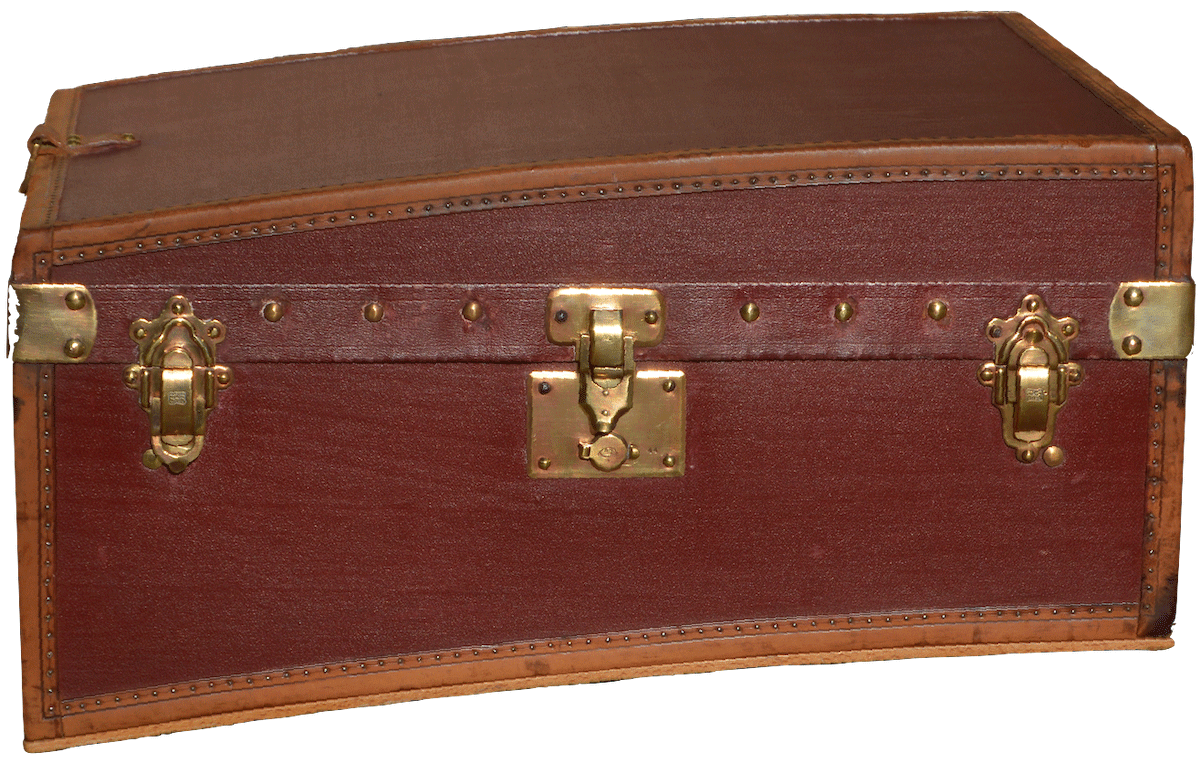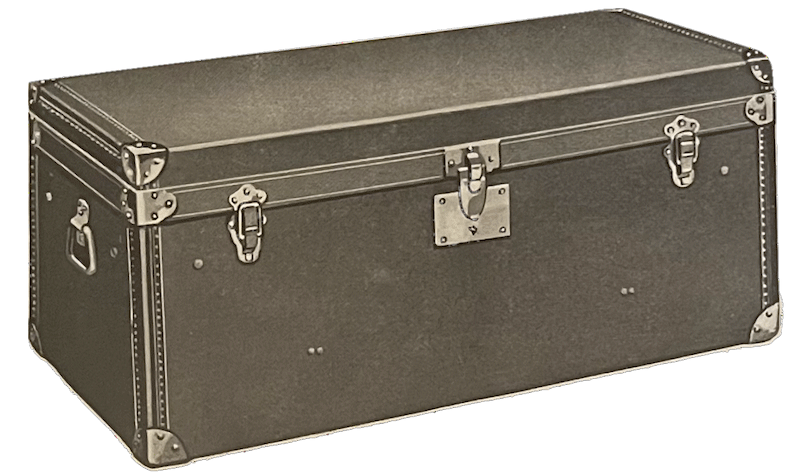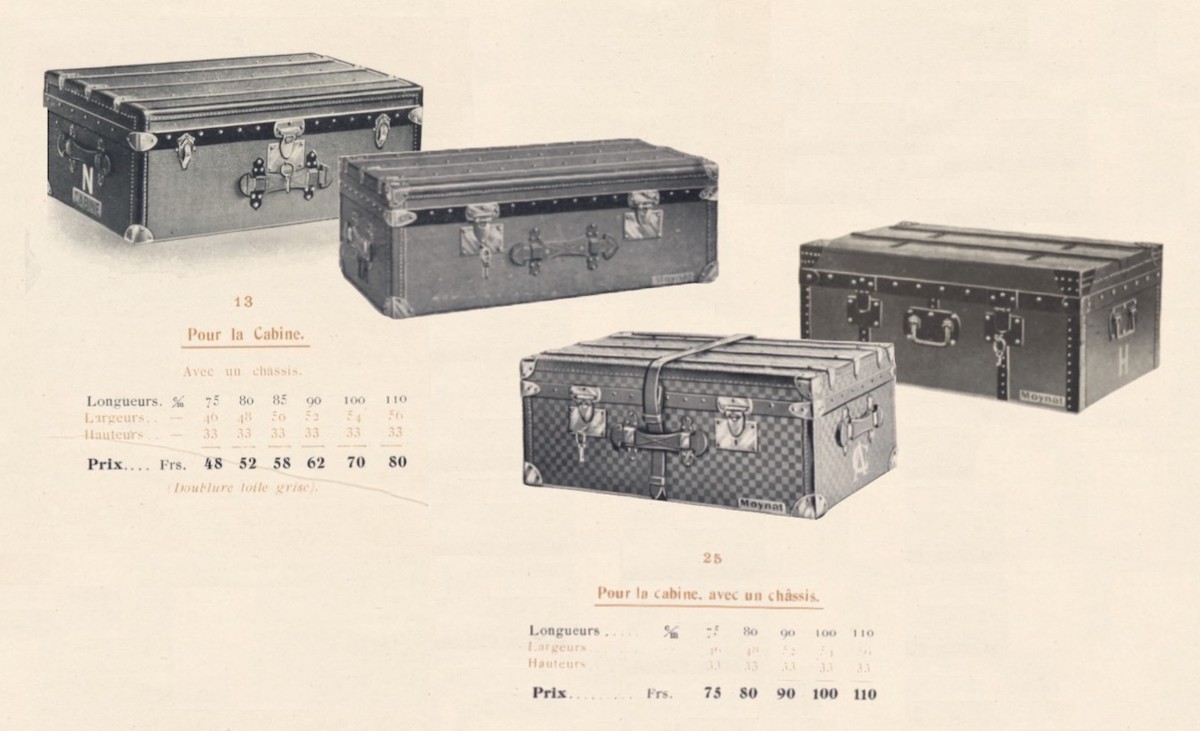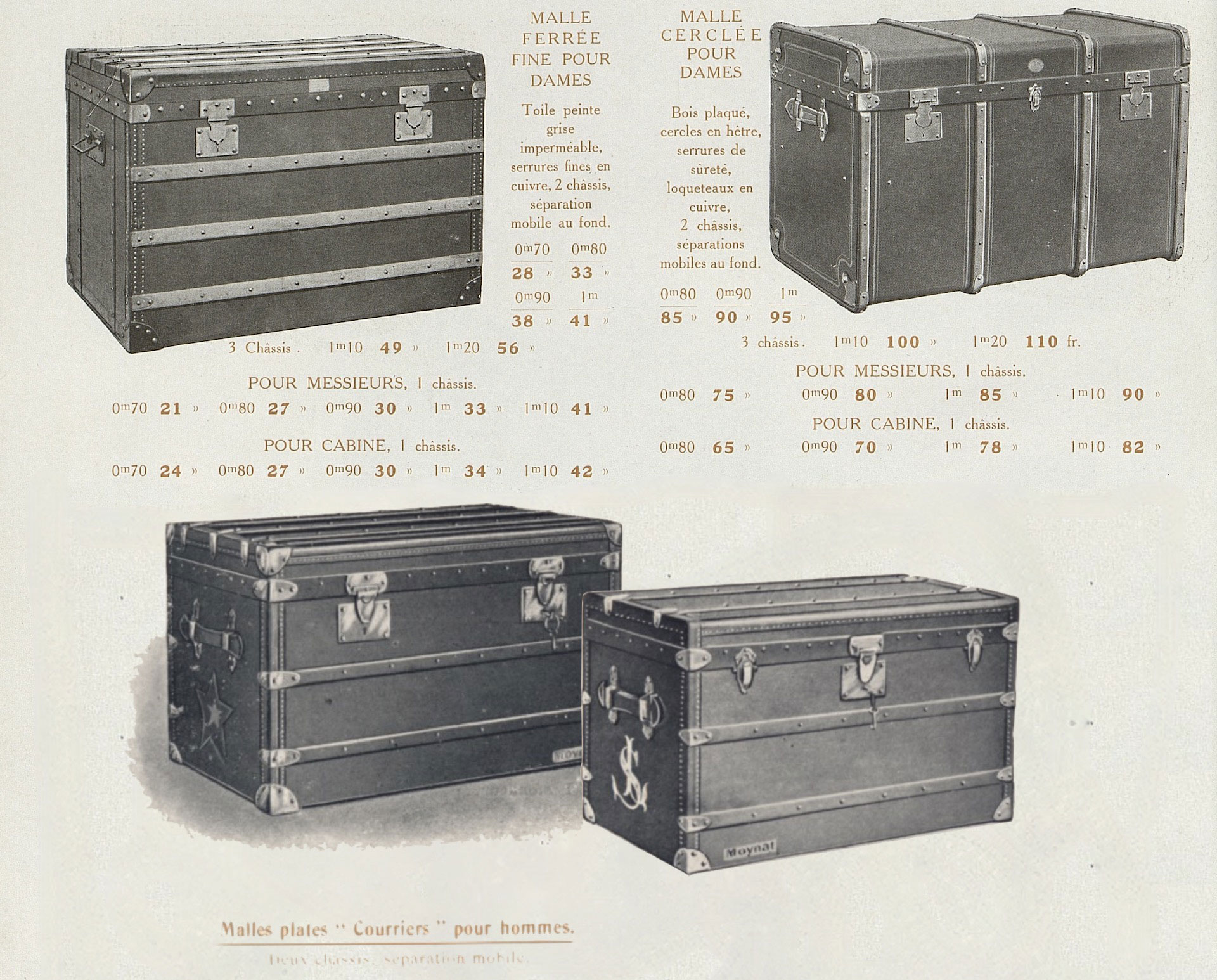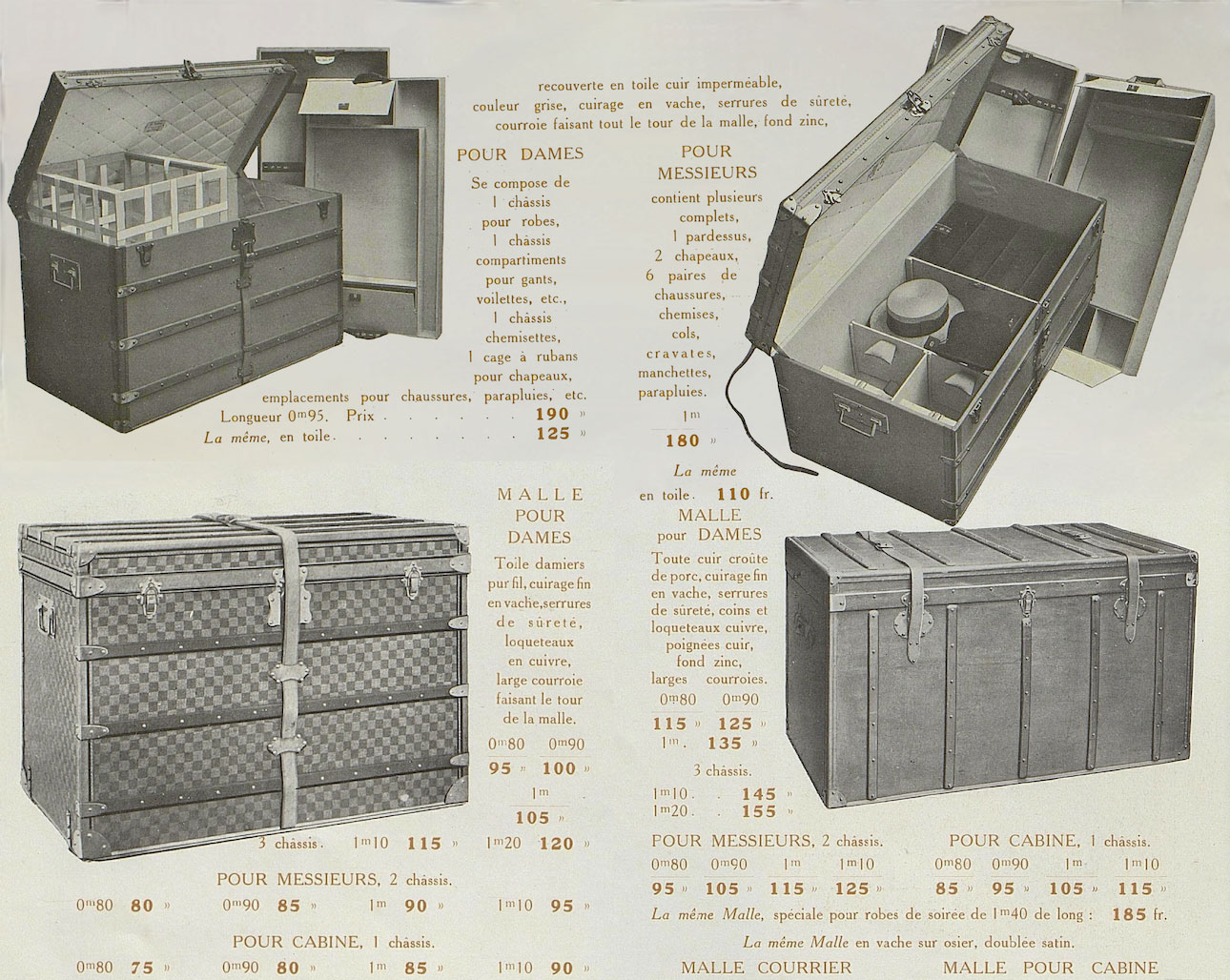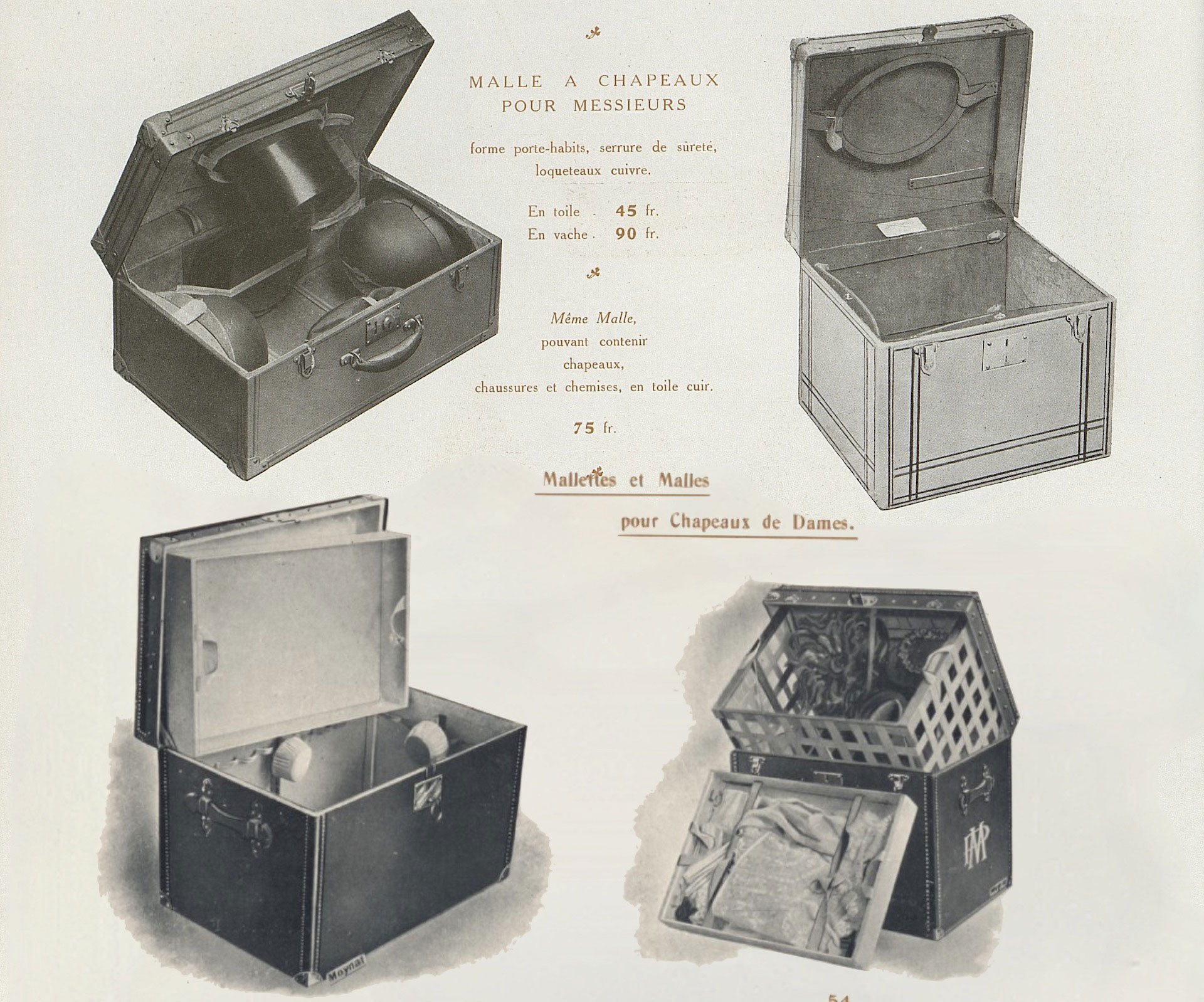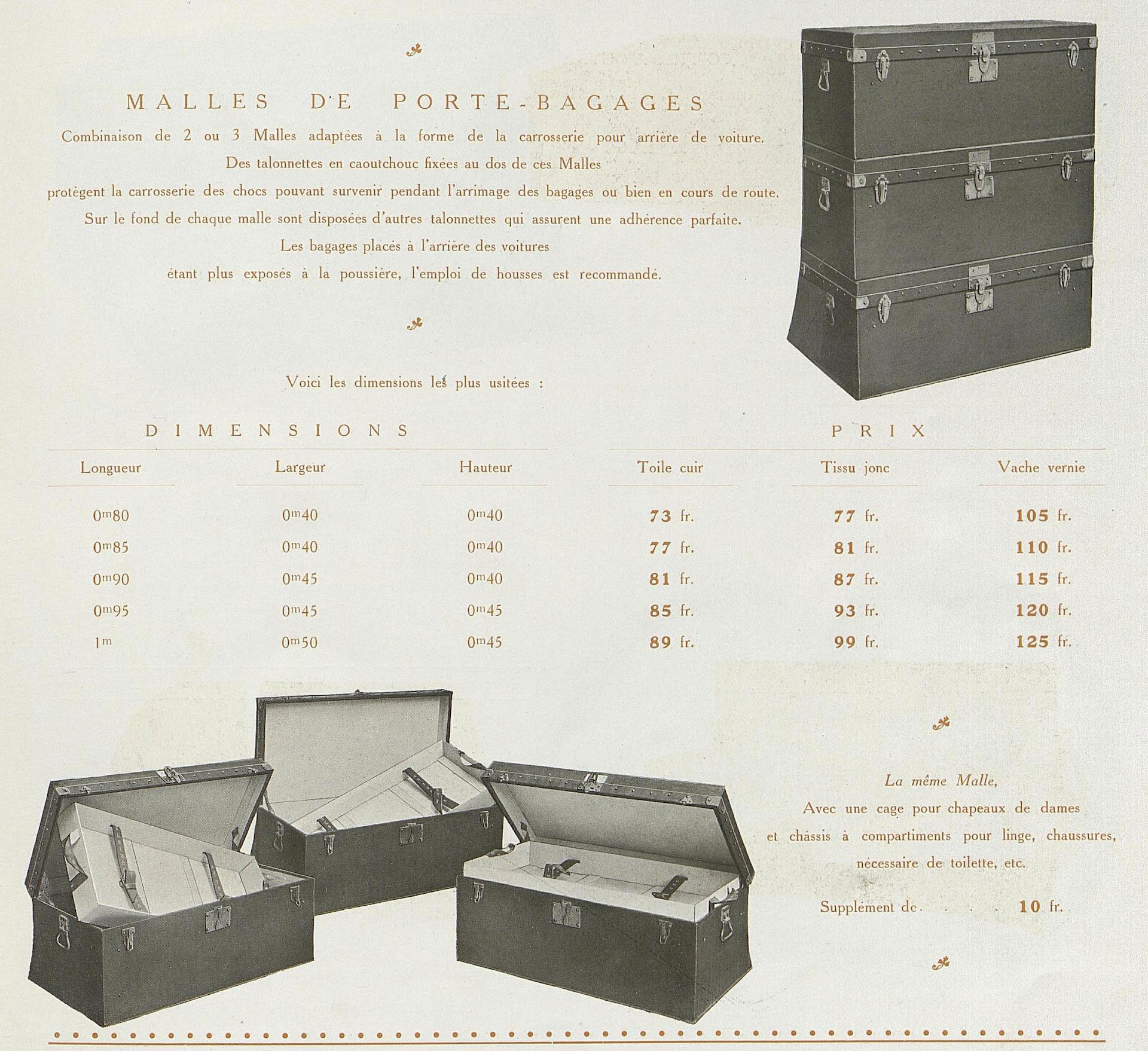We use cookies to make your experience better. To comply with the new e-Privacy directive, we need to ask for your consent to set the cookies. Learn more.
The different models
Cabin trunks
Most often measuring 33cm in height, the cabin trunk appeared at the beginning of transatlantic travel with dimensions that corresponded perfectly to the height of the beds in an ocean liner cabin. This luggage was designed to allow travellers to carry all their belongings easily and simply, without fear of being stolen or lost. In this small volume, customers could keep the essentials of their clothes useful for the journey and ensure a certain protection of their personal effects, well hidden in a locked trunk and stored under the bed.
Cabin models often have a handle on the front. Originally used to pull the trunk stored under the bed, it also facilitated the handling of the numerous pieces of luggage piled up high, on arrival or departure of a steamer or a train.
Cabin trunks on saleDiscover the period catalog
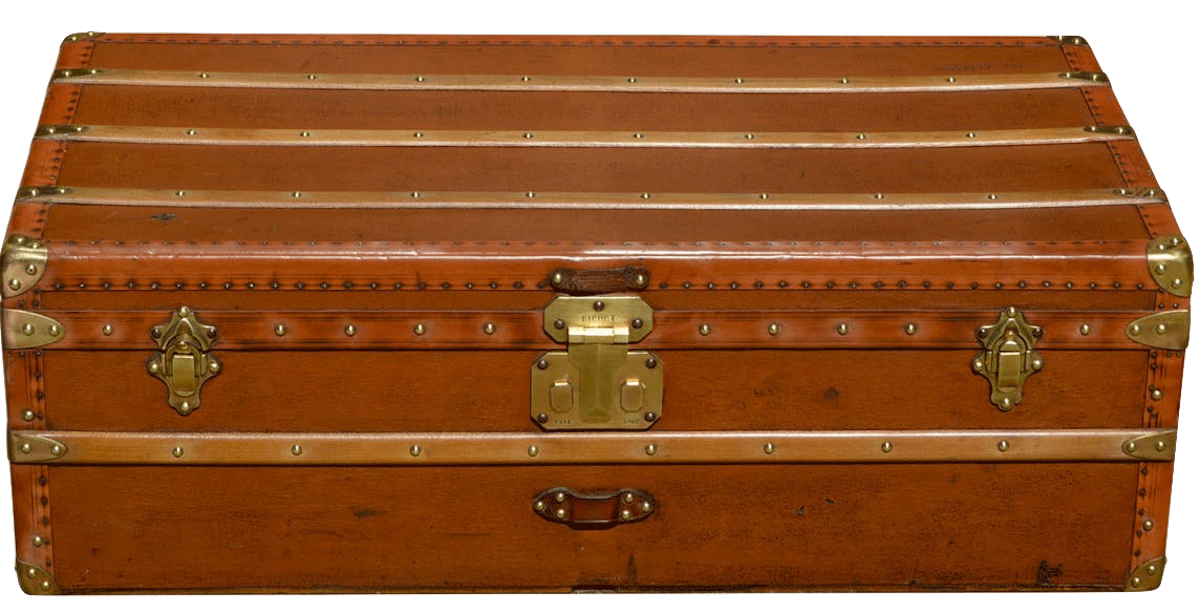
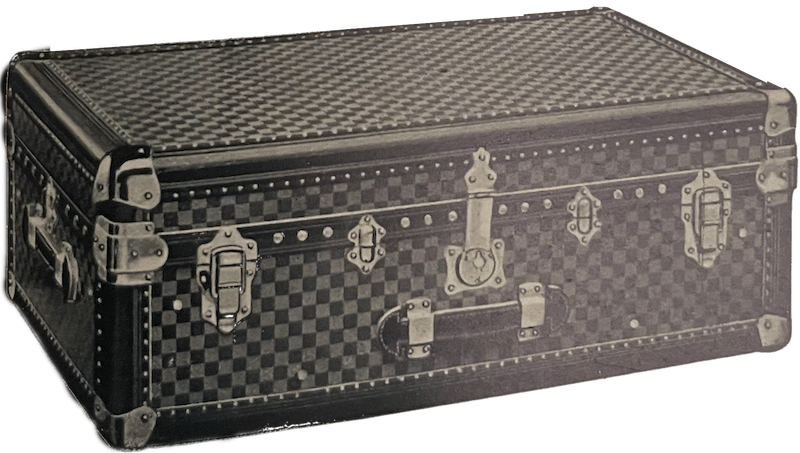
Courrier trunks
Courier trunks are generally between 45 and 55 cm high. Originally, this category of luggage owes its name to the mail trunk, the most common means of public transport used to travel from one city to another during the 19th century. Behind the carriage was a rectangular, curved trunk covered with a thick leather called "cowhide", a skin that was very resistant to the elements.
These trunks were mainly used by men, as they were of medium size and very practical for short stays. Relatively light trunks, these models often have leather handles and a leather strap to ensure closure.
Courrier trunks on saleDiscover the period catalog
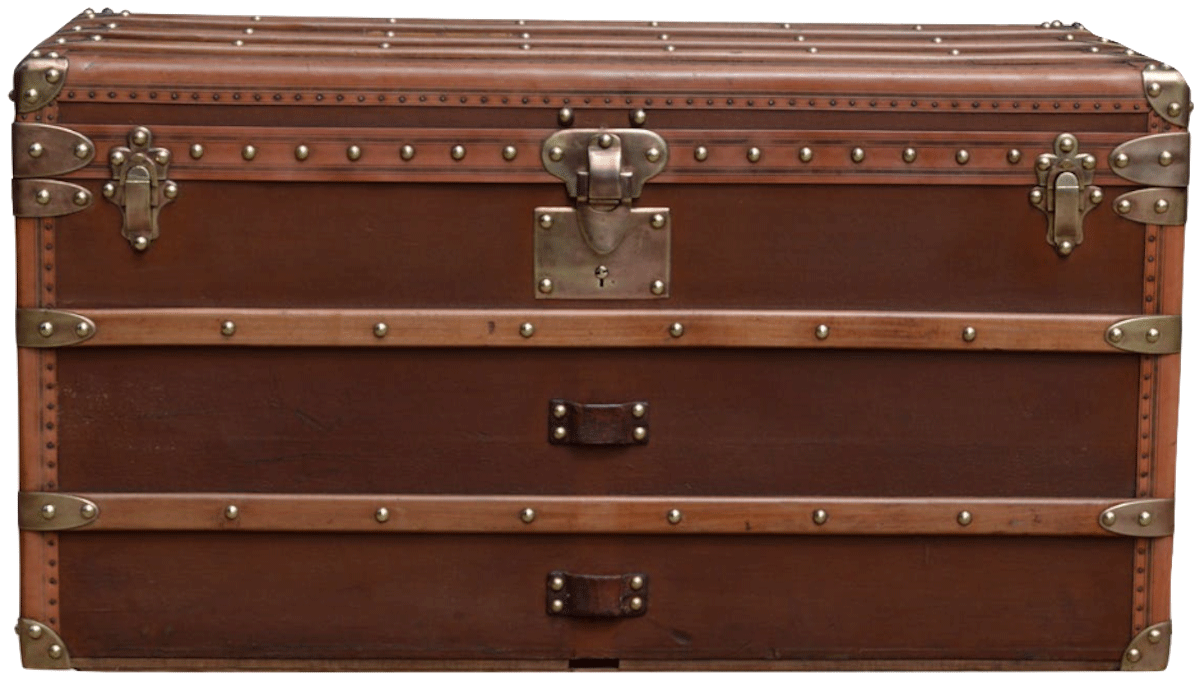
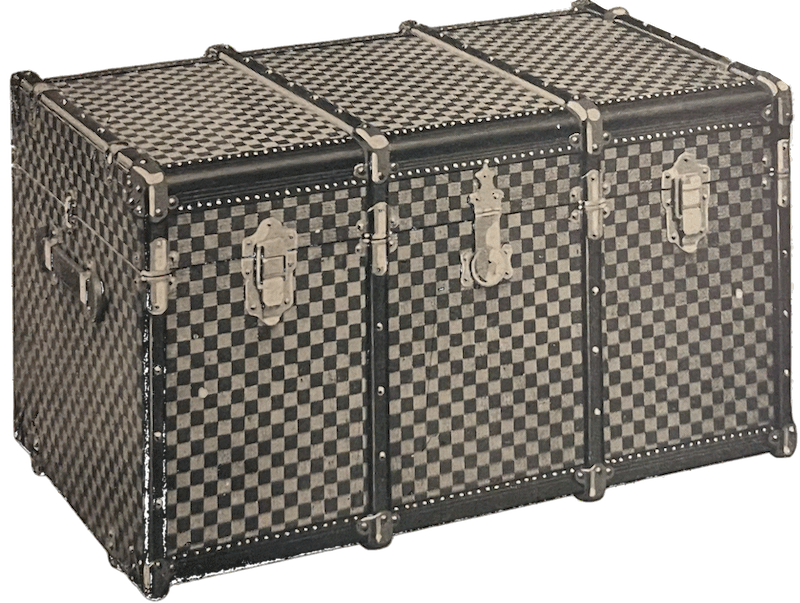
The « Malle haute »
Much taller than the courier trunks, the high trunks (also called "intermediate size" in the period catalogues) are 60 to 80 cm high. These very massive pieces of luggage were mainly used and ordered for long-distance trips requiring a lot of space. They were usually fitted with three or even four interior frames and offered a particularly large amount of storage space to their owners.
These very heavy models were usually equipped with metal or brass handles to ensure perfect solidity. It was also impossible for the customer to travel with this type of luggage without porters. During a transatlantic voyage, these trunks were too large to be stored in the passenger cabins, so they were mostly hold trunks, often exposed to the most extreme conditions.
The « Malle haute » on saleDiscover the period catalog
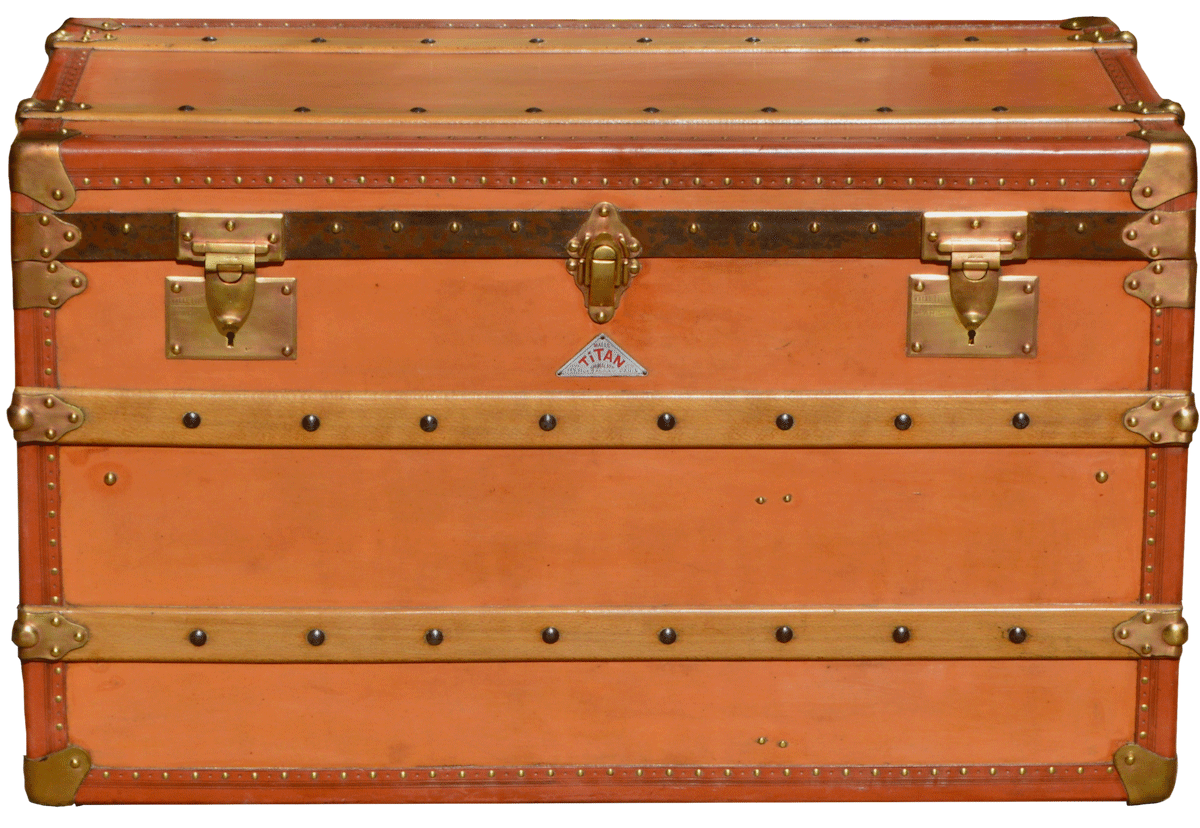
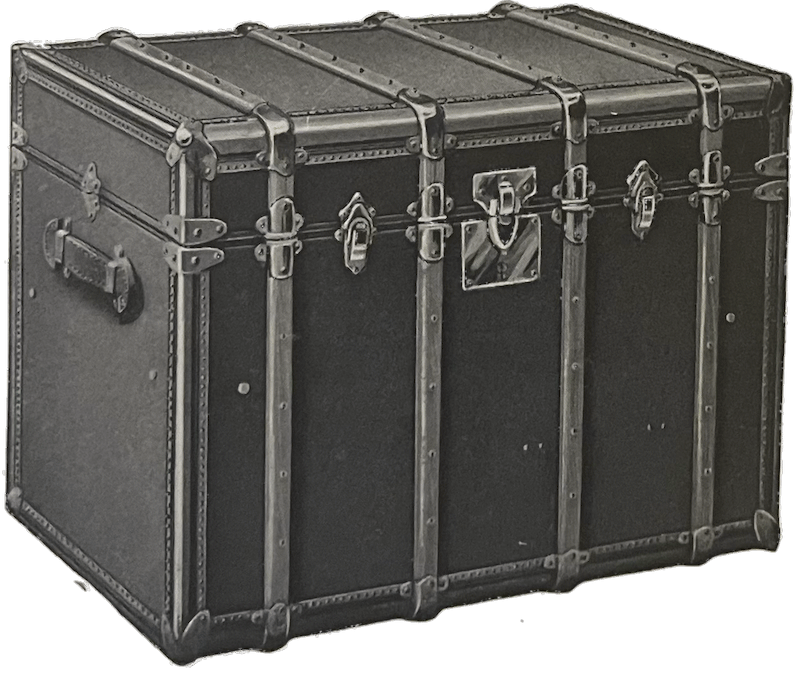
The Hats trunks
For a woman as for a man, it was unthinkable in 1900 to travel without a hat. Whether top hat or feathered hat, this indispensable accessory was on sale in every shop window in Paris and occupied a huge part of the fashion magazines.
Many of the trunks produced were dedicated to the transport of these accessories, with special arrangements depending on the nature of the customer. A woman could travel with about sixty hats, while three were enough for a man. There are many different models, but it is the cubic shape that best represents the luggage of yesteryear.
The Hats trunks on saleDiscover the period catalog
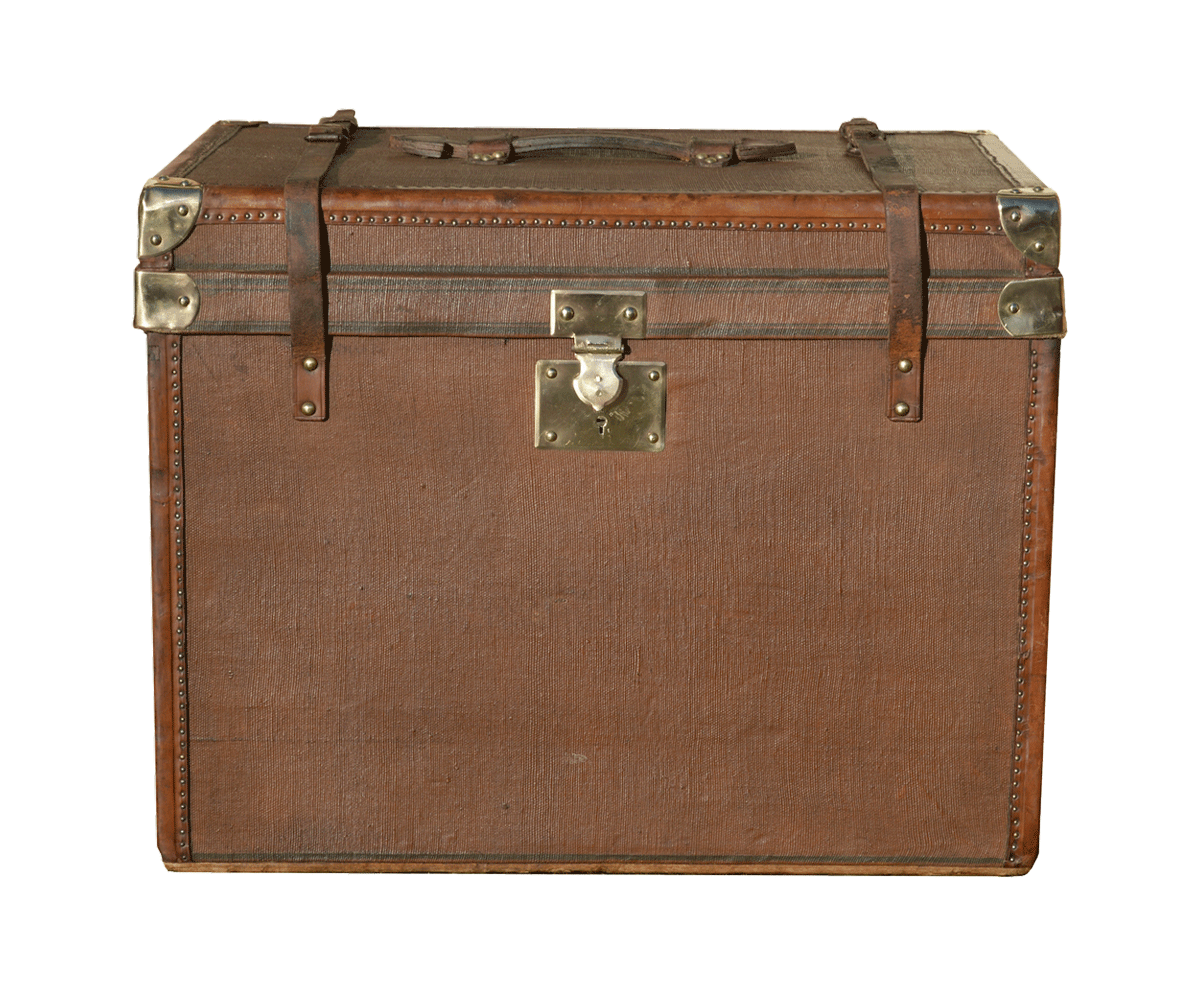
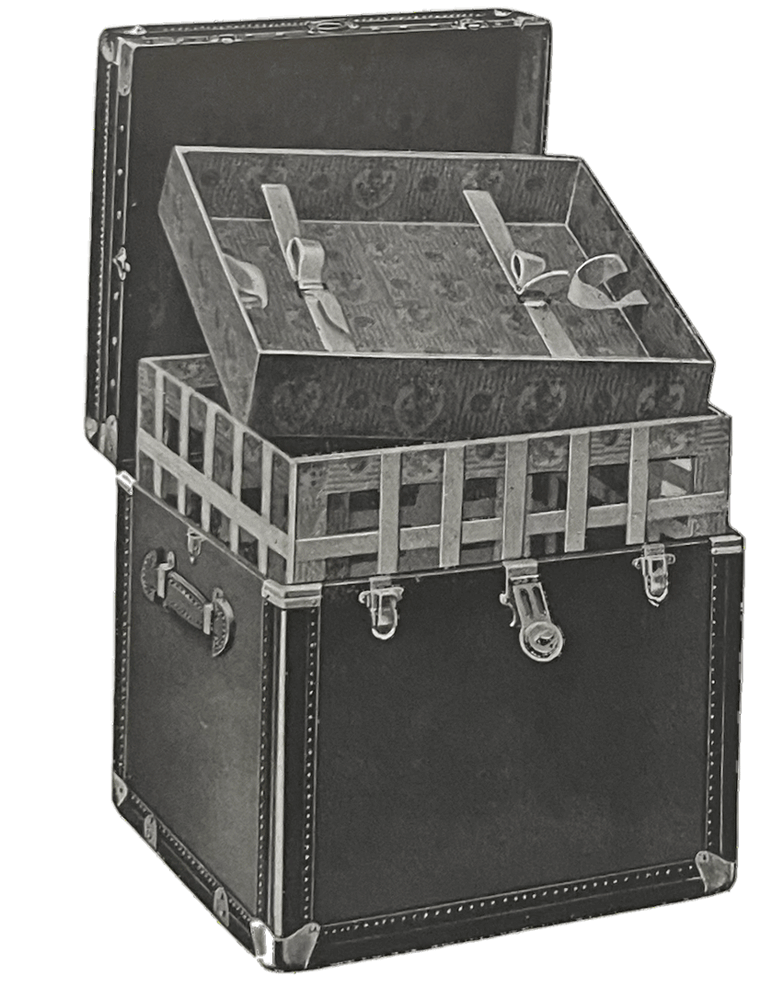
Automobile trunks
Car trunks are very different from other luggage, with very particular shapes, colours and features. At the beginning of the 1900s, each car had to be equipped with a specific trunk, fixed at the back, on the running board or on the roof.
Many of these trunks were made to measure for a single car model. Depending on the customer's needs and the vehicle's particularities (the shape of the bonnet, the roof, the boot) the trunk maker had to make a trunk that could naturally fit the shape of the bodywork. The trunk also had to be covered with a waterproof canvas, the same colour as the car. Small, narrow metal handles are always found on car trunks, to allow a strap to be attached to the car.
Automobile trunks on saleDiscover the period catalog
